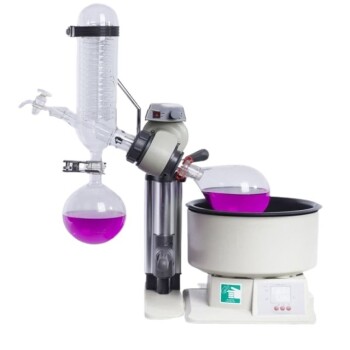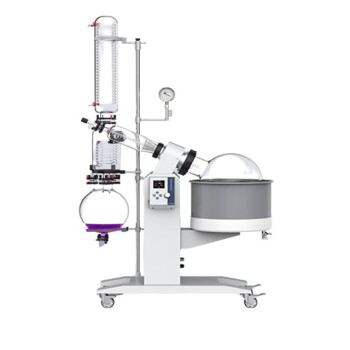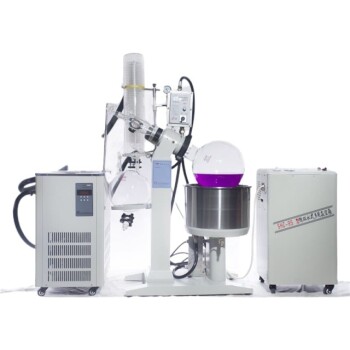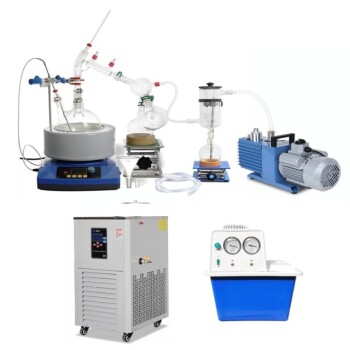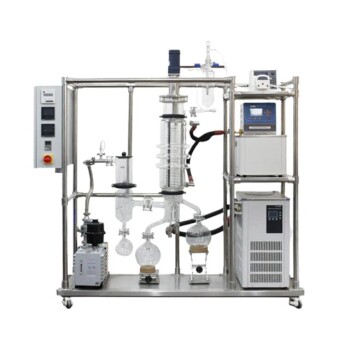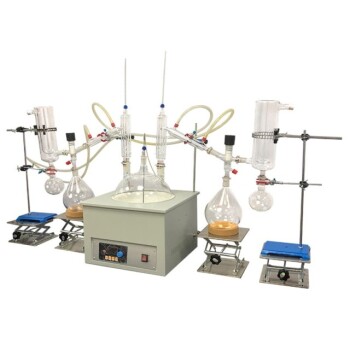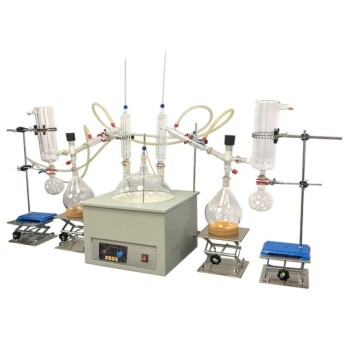Removing solvents without a rotary evaporator (Rotovap) is a common challenge in laboratories and industrial settings. While the rotary evaporator is a popular tool for solvent removal due to its efficiency and ability to handle heat-sensitive materials, there are several alternative methods that can be employed. These methods include using falling film evaporators, wiped film evaporators, vacuum ovens, Schlenk lines, and other techniques that leverage vacuum, heat, and surface area to achieve solvent evaporation. Each method has its own advantages and limitations, making it important to choose the right approach based on the specific requirements of the sample and the solvent being removed.
Key Points Explained:
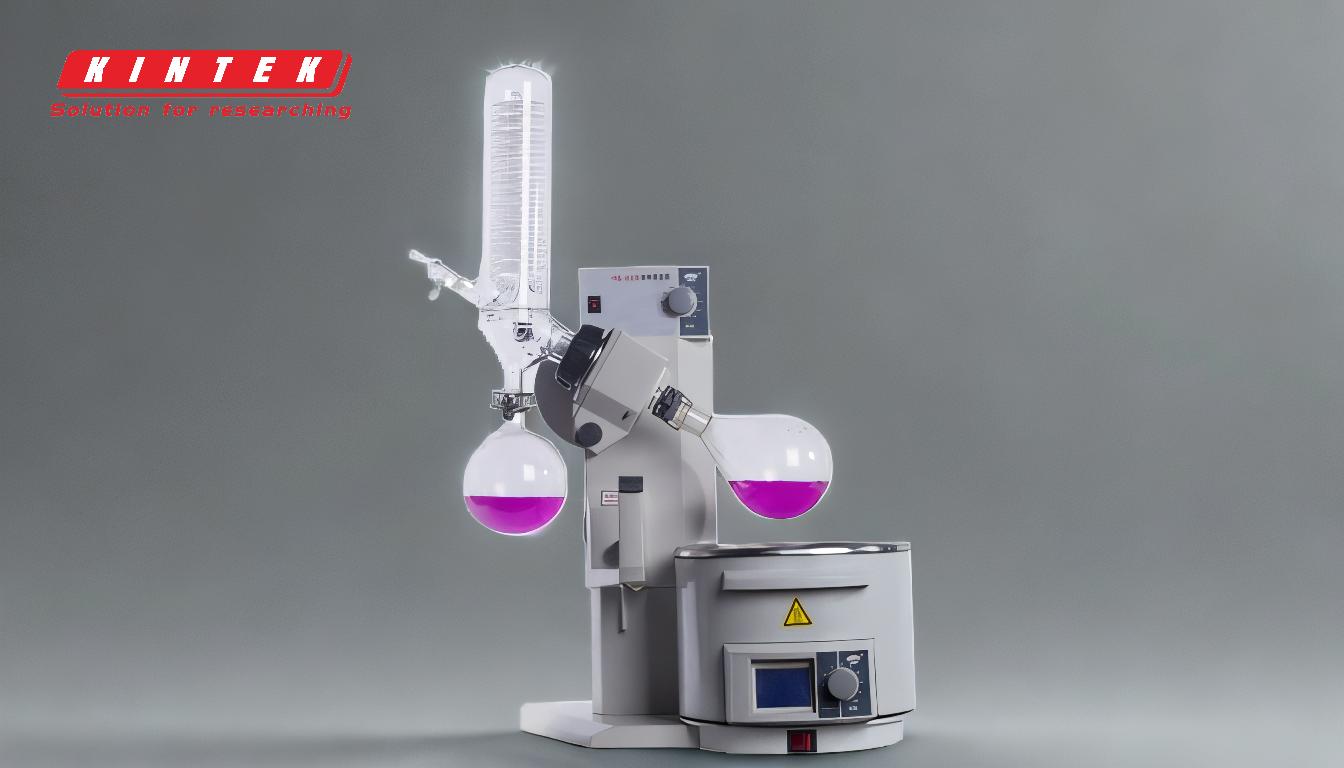
-
Falling Film Evaporator:
- How it works: The falling film evaporator operates similarly to a vertical shell and tube heat exchanger. The solvent flows down the inner walls of the tubes as a thin film, while heat is applied externally. The solvent evaporates as it moves down the tube, and the vapor is separated from the liquid.
- Advantages: This method is highly efficient for heat-sensitive materials because the solvent is exposed to heat for a short duration. It also allows for continuous processing, making it suitable for large-scale operations.
- Limitations: Falling film evaporators require precise control of the flow rate and temperature to ensure uniform evaporation. They are also more complex and expensive to set up compared to simpler methods like vacuum ovens.
-
Wiped Film Evaporator:
- How it works: The wiped film evaporator uses a rotating wiper blade to spread the solvent into a thin, turbulent film on the inner surface of a heated cylinder. The solvent evaporates as it moves down the cylinder, and the vapor is condensed and collected.
- Advantages: This method is highly effective for viscous or heat-sensitive materials because the thin film ensures rapid and uniform heat transfer. It also allows for the processing of materials with high boiling points.
- Limitations: Wiped film evaporators are more complex and require regular maintenance due to the moving parts. They are also more expensive and may not be suitable for small-scale operations.
-
Vacuum Oven:
- How it works: A vacuum oven removes solvents by placing the sample in a sealed chamber and applying a vacuum to reduce the pressure. The reduced pressure lowers the boiling point of the solvent, allowing it to evaporate at a lower temperature. Heat can be applied to accelerate the process.
- Advantages: Vacuum ovens are simple to use and can handle a wide range of solvents and sample types. They are also relatively inexpensive compared to more specialized equipment.
- Limitations: The process can be slower compared to other methods, especially for solvents with high boiling points. Additionally, the sample may be exposed to higher temperatures for longer periods, which could be a concern for heat-sensitive materials.
-
Schlenk Line:
- How it works: A Schlenk line is a vacuum and inert gas manifold used in chemistry laboratories. It allows for the removal of solvents under reduced pressure while maintaining an inert atmosphere. The sample is placed in a flask, and the solvent is evaporated under vacuum, often with gentle heating.
- Advantages: This method is ideal for air-sensitive or moisture-sensitive compounds, as it allows for solvent removal in a controlled environment. It is also relatively simple to set up and use.
- Limitations: Schlenk lines are typically used for small-scale operations and may not be suitable for large volumes of solvent. They also require careful handling to avoid contamination or exposure to air.
-
Other Methods:
- Air Drying: For volatile solvents, simply leaving the sample in a well-ventilated area or under a fume hood can allow the solvent to evaporate naturally. This method is simple and cost-effective but may not be suitable for all solvents or samples.
- Freeze Drying (Lyophilization): This method involves freezing the sample and then reducing the pressure to allow the solvent to sublimate directly from the solid to the gas phase. It is particularly useful for heat-sensitive materials and can result in a dry, porous product.
- Nitrogen Blowdown: In this method, a stream of nitrogen gas is directed at the sample to evaporate the solvent. This is often used for small volumes and can be combined with gentle heating to speed up the process.
-
Considerations for Choosing a Method:
- Solvent Properties: The boiling point, volatility, and heat sensitivity of the solvent are critical factors in choosing the right method. For example, a vacuum oven may be suitable for high-boiling solvents, while a wiped film evaporator may be better for heat-sensitive materials.
- Sample Characteristics: The nature of the sample, including its viscosity, thermal stability, and sensitivity to air or moisture, will also influence the choice of method. For example, a Schlenk line may be necessary for air-sensitive compounds.
- Scale of Operation: The volume of solvent to be removed and the scale of the operation (small-scale lab vs. large-scale industrial) will determine the feasibility of different methods. Falling film and wiped film evaporators are more suited for large-scale operations, while vacuum ovens and Schlenk lines are better for small-scale work.
- Equipment Availability and Cost: The availability of equipment and the budget will also play a role in selecting the appropriate method. More specialized equipment like wiped film evaporators may be expensive and require more maintenance, while simpler methods like air drying or vacuum ovens are more accessible.
In conclusion, while the rotary evaporator is a versatile and efficient tool for solvent removal, there are several alternative methods available, each with its own set of advantages and limitations. The choice of method will depend on the specific requirements of the solvent and sample, as well as the scale of the operation and available resources. By carefully considering these factors, it is possible to effectively remove solvents without the need for a rotary evaporator.
Summary Table:
| Method | Advantages | Limitations |
|---|---|---|
| Falling Film Evaporator | Efficient for heat-sensitive materials; continuous processing for large scale. | Requires precise control; complex and expensive setup. |
| Wiped Film Evaporator | Effective for viscous/heat-sensitive materials; handles high boiling points. | Complex, requires maintenance; expensive; not ideal for small-scale operations. |
| Vacuum Oven | Simple to use; handles wide range of solvents; cost-effective. | Slower for high-boiling solvents; may expose samples to higher temperatures. |
| Schlenk Line | Ideal for air-sensitive compounds; simple setup. | Limited to small-scale operations; requires careful handling. |
| Air Drying | Simple and cost-effective for volatile solvents. | Not suitable for all solvents or samples. |
| Freeze Drying | Preserves heat-sensitive materials; results in dry, porous product. | Requires specialized equipment; slower process. |
| Nitrogen Blowdown | Effective for small volumes; can be combined with gentle heating. | Limited to small-scale applications. |
Need help selecting the best solvent removal method for your lab? Contact our experts today!


